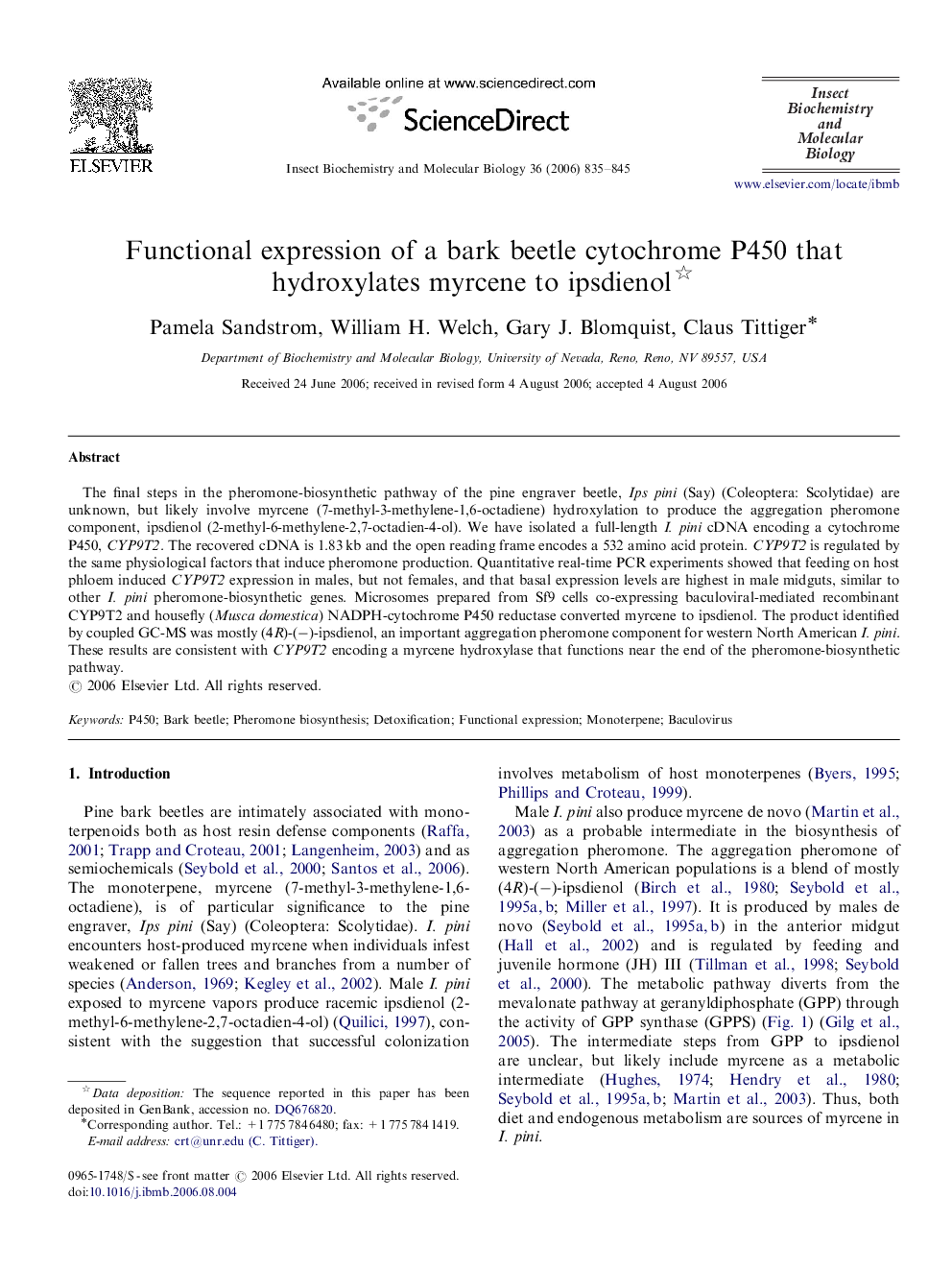| Article ID | Journal | Published Year | Pages | File Type |
|---|---|---|---|---|
| 1983175 | Insect Biochemistry and Molecular Biology | 2006 | 11 Pages |
Abstract
The final steps in the pheromone-biosynthetic pathway of the pine engraver beetle, Ips pini (Say) (Coleoptera: Scolytidae) are unknown, but likely involve myrcene (7-methyl-3-methylene-1,6-octadiene) hydroxylation to produce the aggregation pheromone component, ipsdienol (2-methyl-6-methylene-2,7-octadien-4-ol). We have isolated a full-length I. pini cDNA encoding a cytochrome P450, CYP9T2. The recovered cDNA is 1.83Â kb and the open reading frame encodes a 532 amino acid protein. CYP9T2 is regulated by the same physiological factors that induce pheromone production. Quantitative real-time PCR experiments showed that feeding on host phloem induced CYP9T2 expression in males, but not females, and that basal expression levels are highest in male midguts, similar to other I. pini pheromone-biosynthetic genes. Microsomes prepared from Sf9 cells co-expressing baculoviral-mediated recombinant CYP9T2 and housefly (Musca domestica) NADPH-cytochrome P450 reductase converted myrcene to ipsdienol. The product identified by coupled GC-MS was mostly (4R)-(â)-ipsdienol, an important aggregation pheromone component for western North American I. pini. These results are consistent with CYP9T2 encoding a myrcene hydroxylase that functions near the end of the pheromone-biosynthetic pathway.
Keywords
Related Topics
Life Sciences
Agricultural and Biological Sciences
Insect Science
Authors
Pamela Sandstrom, William H. Welch, Gary J. Blomquist, Claus Tittiger,
